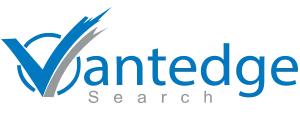
Skills Based Hiring: Strategies for How to Hire the Right Person
Think back to your last hire. How did you go about sourcing, screening, and ultimately selecting someone for the position? Most likely, the candidate(s) were screened by education and experience then used a traditional interview process to find a good fit. If you were lucky, you made the right choice. But most often, such methods result in poor hiring decisions not because you didn’t know what’s needed for that role, but because it’s hard to figure out how good someone is from a resume.
That’s why skills based hiring is producing much better results. It involves hiring for the key skills required for a certain job, whether they be mathematical, cognitive, or soft skills like exceptional people skills or customer service. The advantage here is that when you screen and hire someone best skilled for a particular position, you save on possible frustration for both your organization and the candidate.
It is also easier to train people hired to match a defined skillset, and they tend to have a deeper understanding of what’s required of them. Several other benefits, such as increased productivity, stack up quickly when you focus on a candidate’s capabilities rather than their education, academic ranking, or years of experience.
Why older ways won’t work
Existing practices eliminate candidates who have learned skills outside of work or school, as well as those candidates who haven’t optimized their resumes to conform to applicant tracking system barriers. Another problem with traditional approaches to hiring is that skills are usually assessed much later in the hiring process. Organizations bring in candidates that meet their requirements, such as a college degree and a certain number of years of experience in a similar role, without assessing if the candidate has the skills necessary to get the job done.
Hiring the right stuff
Senior executives often view a college degree as a proxy for hard and soft skills, which can narrow the candidate pool. Skills-based hiring represents a pivotal shift from traditional degree-focused selection to a more skills-based recruiting approach. Embracing a broader range of evaluation criteria, beyond just academic qualifications, opens new talent pipelines and creates opportunities for non-degreed job seekers. This method can also lead to reduced employee turnover, addressing a key aspect of hiring challenges.
Though technology companies have been the pioneers in embracing a skills-based approach to hiring (Google, Apple, IBM, Bank of America, and even Starbucks changed their hiring methods a while ago and no longer require a degree for competitive roles), it applies to any domain. There have been several instances of organizations rewriting a job posting without the degree requirement and getting flooded with high-quality candidates bringing varied life experiences and new ways of thinking to the table.
Making a mindset change easy
Switching your hiring model to skills-based hiring requires a significant time investment, rewriting job descriptions based on required skills, and centering the hiring process around verifiable skills. Changing traditional methods has never been easy. But in this case the good news is that HR professionals new to skill-based hiring don’t have to start from scratch. There are both proprietary (like HackerRank) as well as open-source tools available today to help train HR teams as well as hiring managers, with evaluating competencies and skills, writing job descriptions, and with using inclusive interviewing techniques. For instance, hiring managers can be guided to understand that technical knowledge is the preliminary rather than the concluding step.
Unlock the Future of
Leadership with
Our Expertise!
Is This the Way of the Future?
Until recently, conventional hiring methods implied that you can’t get a good job until you’ve earned your degree. But there has been a gradual shift in the way companies hire new talent. When your hiring challenge is finding candidates with niche skills, traditional hiring strategies aren’t as effective for identifying top candidates as creative challenges. Google does something unique, with billboards, putting a tricky mathematical puzzle up for all to see. Anyone who solves the billboard puzzle will unlock a URL with another puzzle, which if solved, leads to an offer to apply. For instance, most HR leaders agree that sourcing and hiring a high-calibre HR business partner (HRBP) is hard because a key requirement for this role is the ability to understand business needs. An HRBP has to develop a plan for what types of candidates to recruit, interview, and hire has to increase diversity or bring new skill sets into the company. For a technology enterprise, the ideal HRBP may not be someone with an MBA in HR, but instead a software engineer with HR and business sensibilities. So traditional hiring must give way to more creative, innovative techniques.
This becomes especially important as the modern workplace evolves, and the challenge of finding the talent your company needs to thrive intensifies. The skills required for success in today’s workforce are dynamic. While higher education and past experience are important, there’s an increasing need for employers to directly assess relevant candidate skills. Integrating skill assessment tests into the recruitment process helps in skills-based hiring practices. These tests allow hiring managers to evaluate hands-on skills and determine if candidates possess critical job and problem-solving skills, as well as their ability to learn and adapt.

